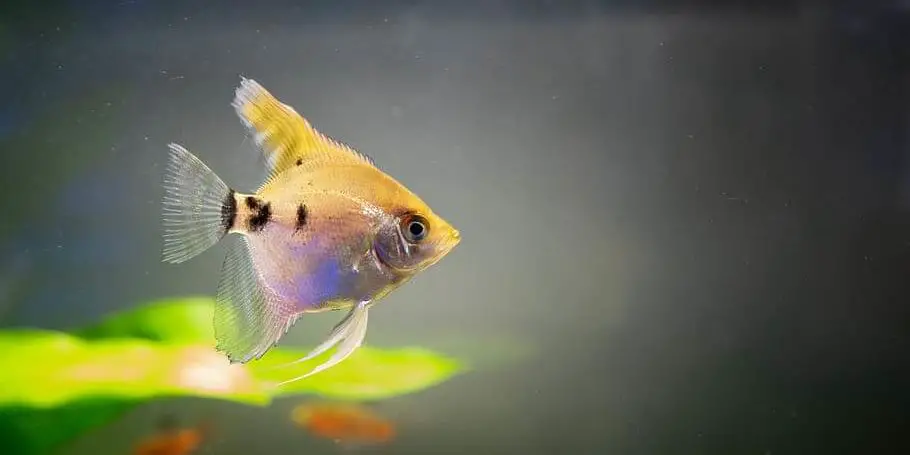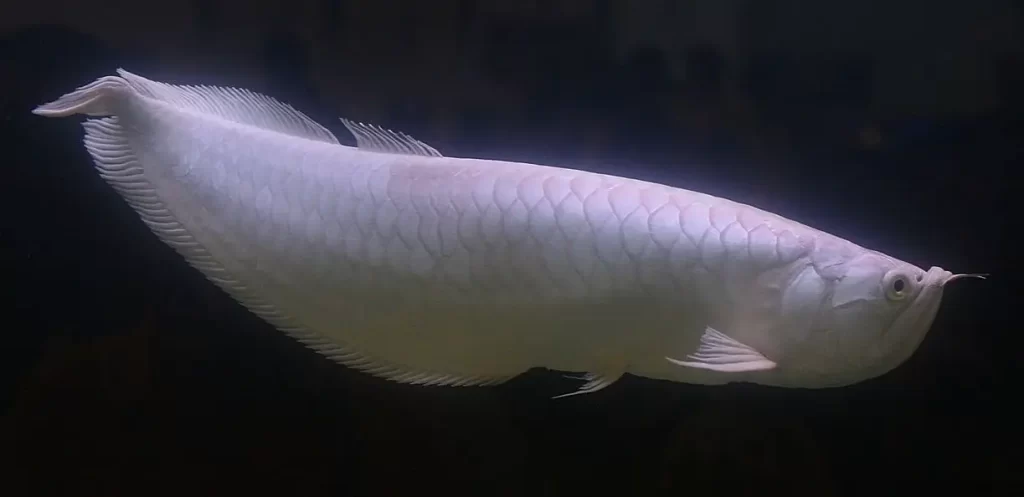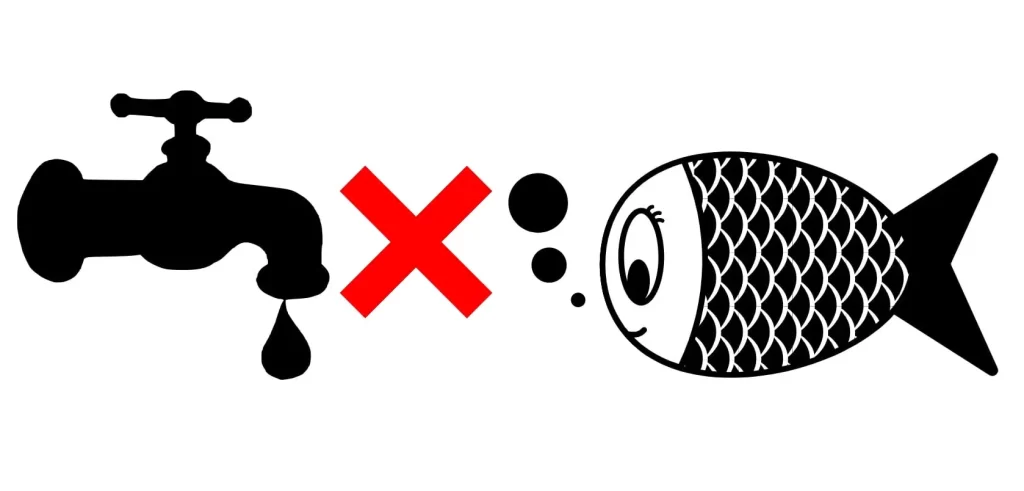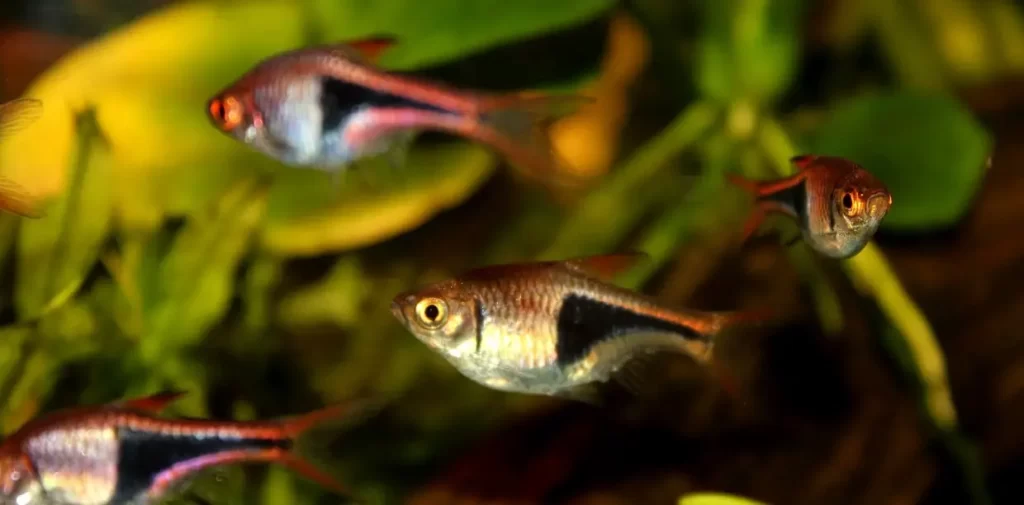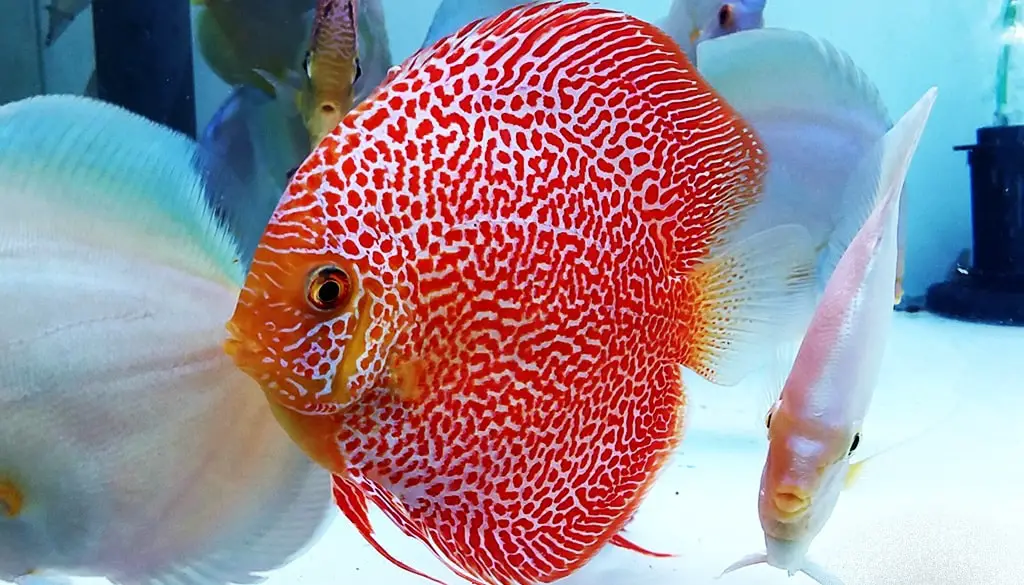In simple words, fish are vertebrate aquatic animals. And without fish, there is no possibility of an aquarium so far. So you need to take proper care of them in every possible manner if you want to keep your aquarium healthy. To keep your fish’s health in good condition, you have to keep them safe from many diseases. In this article today, we will be discussing about Angelfish Diseases and Treatments that will help you to diagnose your angelfish health.
Your fish health depends upon many factors like quality of water, improper feeding, inadequate filtration, improper care, and so on. Pathogens like a bacterial infection, viral infection, fungal infection, metazoan parasites, water wound infections can cause angelfish a disease too. If not taken well care, your fish will be sick for sure and can lose its life.
Read Full article on Angelfish Care.
There are many diseases your angelfish can get through if not taken proper care. Some common fish diseases are Cottonmouth, Dropsy, fin/tail rot, Fungal infections, hole in the head, Ich or white spot, Popeye. There is always a solution to every problem. So, in this case, you need to be a bit concerned about the common prevention and treatment like using proper aquarium equipment, cleaning the aquarium tank from time to time, examining the water condition, and maintaining proper water parameters, cleaning the aquarium filter to keep your fish safe and sound.
Prevention is Better Than Cure
There is a true saying that prevention is better than cure. As prevention always decreases the possibility of any kind of risk. It is always better not to take a chance when things come on the health of your aquarium fish.
First thing comes first, you need to maintain tank water hygienic and safe as it is directly related to the health of your angelfish. As every living being needs fresh air and water, fish is also included in it. Hygienic and safe water has no chemical toxins, which can help your fish in a proper breathing cycle. It ensures the good health of fish and reduces the risk of diseases in your angelfish.
These are the things you need to do to keep your fish happy and prevent diseases from affecting your fish.
- Always maintain your tank’s water parameter.
- Never ever overcrowd your aquarium.
- Always use a good quality aquarium filter containing all the filter media – Biological, Chemical, and mechanical filter media.
- Don’t overfeed your fish and always siphon any uneaten foods or fish waste from the tank.
- Maintain aquarium water’s pH, Hardness and Temperature as this will directly affect fish health.
- to maintain the water parameters always tet your water condition using an aquarium test kit and act accordingly to maintain the water parameter.
- Give your fish a healthy and balanced diet.
Angelfish Diseases and Treatment | Prevention
Fin and tail rot
Fin and tail rot is a kind of fish disease which directly impacts on the fins of your angelfish. It is generally caused due to various harmful bacteria like Vibrio, Pseudomonas fluorescens, and Aeromonas.
Symptoms
- Inflamed patches on the fins
- Discoloration on the fin’s edge
- Fraying of the fin
- Faded color of the fin
- Loss of appetite
- Lethargy
Causes
- Improper water temperature
- Overcrowding the tank
- Feeding outdated fish food
- Overfeeding
- Poor quality of water
Treatment
There is always a solution to the problem. And treatment for fin and root disease includes the proper examination and water change from time to time. Adding antibiotics can also work as a treatment. Lastly, you can add salt to the water to soothe the fish and remove the infection, and it surely will decrease the chance of fish likely to get the fin and rot kind of disease in the near future.
Columnaris
It is one most common diseases seen in fish that develop a white film over their body, and it disintegrated the fins and tail of the fish. Fish get this kind of disease through bacteria Flavobacterium Columnaria.
Symptoms
- The appearance of white spots or patches on the head
- The decrease in the shiny appearance of the fish
- Fins or gills get grayish in color or white spots
Causes
- Sudden environmental change
- Poor water quality
- Overcrowding
- The decrease in fish’s immune system
Treatment
You can use different kinds of antibiotics and chemicals like Copper sulfate, Furan, Terramycin, and Acriflavine to keep fish safe from Columnaris. Among all those, you can Terramycin because it has proven to be very effective in keeping your fish safe from Columnaris.
Hemorrhagic
It is a fatal infectious fish disease. Fish faces many critical problems like respiration, weakness in muscle, skin, and even internal organs. Fish suffer from Hemorrhagic by eating the infected fish, virus particles, and so on.
Symptoms
- Bulging eyes
- Swollen abdomens
- Darkened coloration
- Abnormal swimming behavior of fish
Causes
- Contaminated water
- Direct contact with infected fish
- Overcrowd aquarium
- Improper water parameters
Treatment
- Examining and maintaining the water parameters
- Using API and Seachem
- Changing the water and cleaning aquarium filter time to time
Dropsy
Dropsy is a disease that is caused by the build-up fluid inside the body cavity and tissue of the fish. This disease causes the dysfunction of the body organs of the fish. Fish get dropsy mainly due to low levels of salts in water.
Symptoms
- Skin lesions appear
- Belly of fish fills with fluids and swollen
- Internal organs are damaged
- Curved spine
- Anus become red and swollen
- Bulge eyes
- Ulcers on the body, along the lateral line
- Pale gills
Causes
- Ammonia or nitrite spikes
- Poor quality of water
- Improper nutrition
- Aggressive tankmates
- Over transportation
- Immense drop in water temperature
Treatment
- Add salt in a proper amount
- Feed fish high quality and fresh foods
- Use antibiotics, either in the food or in the water
- Place the sick fish to a ‘hospital tank.’
- Examine the water from time to time using API master test kit
Pop Eye
Pop-Eye is a kind of fish disease in which the eyes of the fish are swollen and appear cloudy. Fish get PopEye due to being infected with various bacteria, parasites, and fungi.
Symptoms
- Swollen eyeballs of fish
- Cloudy eye
- Discolored of fisheye
- Loss of vision
- Ruptured eye of fish
Causes
- Poor water condition
- Different bacteria, fungi, and parasites
- Certain injury in the eye of fish
Treatment
- Adding aquarium salt
- Examining the water parameters and changing the water time to time
- Treat fish with a broad-spectrum antibiotic food recommended by a veterinarian
- Treating the main tank with an antibiotic
- Using high-quality food for fish’s healthy immune system
Cloudy eyes / Eye cloud
Cloud eye is a disease known as exophthalmos, which makes fish eye cloudy in simple terms. It makes the health of fish eyes poor and cloudy. Fish gets due to a lack of vitamin deficiency and due to low pH levels generally.
Symptoms
- Eyes of fish appear to be cloudy
- The poor vision of fish
- May show distress
Causes
- Presence of Internal parasites like flukes and protozoa
- Lack of Vitamin A and Dietary deficiencies
- Poor water quality
- Low Ph level
Treatment
As there is always treatment for any disease. A list of below treatment can help you out.
- Examine the quality of the water
- Treat the fish with Melafix
Furunculosis
Furunculosis is a highly contagious fish disease, but it has no sudden any dramatic effects in fish. It generally affects the swimming behavior of fish. Generally, fish suffer from Furunculosis by Gram-negative bacteria known as Aeromo-nas salmonicida.
Symptoms
- Skin ulcers
- Frayed fins
- Loss of appetite
- Fish refuses to eat
- Lethargy is seen
- Turn pale
Causes
- Poor maintenance of the aquarium
- Overstocked
- When the fish is infected with mycobacteria
Treatment
There is no vaccine and treatment for this disease. Apart from that, don’t expose your hands in the tank if there is a cut, scratches, or lesions.
Ich (White spot Disease Or Ick)
Itch is one of the most common diseases found in fish. It directly affects the fish’s body, fins, and gills. Fish get Ich when a protozoan attacks.
Symptoms
- White spots appear on the gills and rest of the body
- Clamped fins of the fish
- White patches might be seen
- Loss of appetite
- Rubbing behavior of fish against objects can be seen
Causes
- Improper water temperature
- Poor maintenance of the aquarium
- Presence of parasites
Treatment
Parasites grow faster, which is a bad situation as it causes a high mortality rate. So, you need to act fast in it as soon as possible. Using different antibiotics from the veteran shop can be useful and worthwhile. You need to examine the water temperature from time to time and need to clean the filter at times. You can add aquarium salt to increase the temperature.
Velvet ( Gold Dust Disease)
Velvet is also known for ‘Rust,’ a common disease in fish that is fatal. Fish get Velvet by a species called Oodinium. After getting Velvet, fish cells are likely to be damaged.
Symptoms
- Clamped fins
- Light brown or fine yellow on the skin appears
- Loss of appetite
- Weight loss
- Lethargic behavior can be seen
- Breathing problem in fish is seen
Causes
- Poor maintained aquarium
- Improper water temperature
- Adding new fish without quarantining
Treatment
- Using medications like copper sulfate, formalin, acriflavine can be worthwhile
- Removing carbon when medicating
- Dimming the aquarium lights and making total darkness
- Maintaining the proper water temperature
Hole in the Head
Hole in the head is also known as Hexamitiasis, which affects both salt and freshwater fish. HITH of a fish appears like its name. It is caused by poor resistance to fish and bad water quality.
Symptoms
- Holes in the head of fish is seen
- Unusual swimming behavior of fish due to loss of balance
- Lethargy signs can be seen
- Coloration becomes subdues
Causes
- Nutritional deficiencies like key vitamins and dietary iodine
- Poor water quality
- Presence of high nitrate level
Treatment
- Removing activated carbon
- Changing the water
- Providing sufficient vitamins and iodine
Neon Tetra Disease
Neon Tetra is a kind of fish disease that affects a wide variety of fish. It’s like a bacterial infection, which is caused by the presence of parasite organisms’ Pleistophora Hyphessobryconis. It consumes the fish from the inside out as a result.
Symptoms
- Curve spine
- Difficulty swimming behavior
- Weight loss of the fish is seen
- Loss of color
- Cysts on the body
Causes
- When fish eats other dead fish
- Infected food
Treatment
For this disease, there is no fixed medicine or treatment. But removing the infected fish and being concerned about the food while feeding can be done. For treatment, you can maintain high-quality water and regular cleaning to ensure the best of it.
Lymphocystis
Lymphocystis is one of the common fish diseases found in fish that affect the skin and fins. It only disfigures fish in simple terms. Fish get this disease when they make contact with infected fish and live food.
Symptoms
- Cauliflower like growth is seen on the skin or fins
- Your fish will show an unusual behavior
- The immense growth of the fins and gills
Causes
- Contact with infected fish or live food.
- Maintaining proper water temperature
Treatment
Lymphocystis has no certain fixed treatment. But still, you can maintain the proper quality of water, chemistry, use of appropriate drugs, nutrition, and population density to ensure the fish risk-free.
Nematodes ( Roundworms )
Nematodes are a severe fish disease that fish once gets, hard to treat. Fish gets worms out of the anus after suffering from it. Fish get this disease by eating raw organic things.
Symptoms
- Sink belly of the fish
- Worms hanging out of the anus is seen
- Loss of appetite
- Lethargy is seen
Causes
- Added organic food like raw fish food, fish, and wood.
- Leaving uneaten food
Treatment
- Treating fish with Parachlorometaxylenol
- Reducing the amount of fish food
- Adding Gourami or Pleco fish in the tank
Argulus ( Fish Lice Or Fish Louse )
It is one of the biggest parasites, which can range from 5 to 10mm in length. Argulus can stress and damage the skin of the fish. Fish generally suffer from Argulus as Lice is transferred from fish to fish.
Symptoms
- The appearance of small dark spots in fish body
- Ulcers and inflamed areas where they the lice live
- You fish will remail restlessly in your tank
- Fish rub itself against the surface or objects of aquarium glass.
Causes
- If you add fish from a pond to your aquarium.
- If you bought a fish that already has Argulus on its body.
Treatment
- Using tweezers to remove the parasites.
- Use antiseptic to clean the wound
- Using specialized medication while manually removing them.
Disease prevention
As prevention is the best form of medicine, there are many ways you can apply to keep fish healthy and fit. Some are as follows.
- Nutritious Diet
- Maintaining water temperature
- Quality water
- Examining the tank behavior from time to time
- Quarantine the new fish
- Getting prescription and recommendation form veterans from time to time
Conclusion
As a matter of fact, ‘Nothing good comes that easy,’ you also need to be concerned while keeping an aquarium. It’s not that easy to bring nature’s beauty to your home. But there is always a solution to all problems. If you are concerned about the Angelfish diseases and treatments I have tried it simple for you to understand. If you have any further queries regarding any fish do leave us a message on the comment section below.

